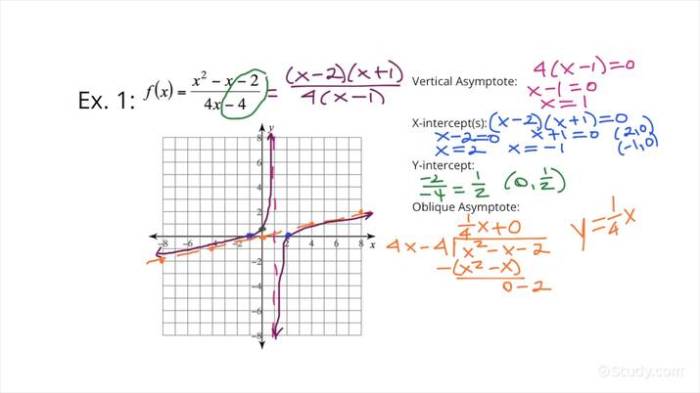Roc in linear and quadratic functions – In the realm of mathematics, the rate of change in linear and quadratic functions plays a pivotal role in understanding their behavior and applications. This article delves into the concept of ROC, examining its significance in linear functions and the unique characteristics of quadratic functions.
Linear functions exhibit a constant rate of change, which is represented by the slope of the line. Quadratic functions, on the other hand, exhibit a more complex behavior, with their graphs forming parabolas. The coefficients of a quadratic function determine the shape and orientation of the parabola, while the vertex and axis of symmetry provide insights into its key features.
Rate of Change in Linear Functions

Linear functions are characterized by a constant rate of change, or slope. The slope represents the change in the dependent variable (y) for every one-unit change in the independent variable (x).
The slope of a linear function can be calculated using the formula: m = (y 2– y 1) / (x 2– x 1), where (x 1, y 1) and (x 2, y 2) are any two points on the line.
Examples of Linear Functions and Their Rates of Change
- The function f(x) = 2x + 1 has a slope of 2, which means that for every one-unit increase in x, the value of y increases by 2.
- The function g(x) = -3x + 5 has a slope of -3, which means that for every one-unit increase in x, the value of y decreases by 3.
The slope of a linear function is significant because it provides information about the direction and steepness of the line.
Quadratic Functions and their Graphs
Quadratic functions are characterized by a U-shaped or parabolic graph. The general form of a quadratic function is f(x) = ax 2+ bx + c, where a, b, and c are real numbers.
To graph a quadratic function, follow these steps:
- Find the vertex of the parabola, which is the point (h, k) where the parabola changes direction.
- Plot the vertex on the coordinate plane.
- Determine the direction of the parabola by looking at the sign of the leading coefficient (a). If a is positive, the parabola opens upward. If a is negative, the parabola opens downward.
- Plot additional points on the parabola by substituting values of x into the function.
- Connect the points with a smooth curve.
The relationship between the coefficients and the shape of the parabola is as follows:
- The leading coefficient (a) determines the direction and steepness of the parabola.
- The x-coordinate of the vertex (h) is determined by the coefficient of the linear term (b).
- The y-coordinate of the vertex (k) is determined by the constant term (c).
Vertex and Axis of Symmetry

The vertex of a parabola is the point where the parabola changes direction. The x-coordinate of the vertex is given by h = -b / 2a.
The axis of symmetry of a parabola is the vertical line that passes through the vertex. The equation of the axis of symmetry is x = h.
Intercepts of Quadratic Functions: Roc In Linear And Quadratic Functions

The intercepts of a quadratic function are the points where the graph of the function crosses the x-axis and y-axis.
X-Intercepts
The x-intercepts of a quadratic function are the points where the graph of the function crosses the x-axis. To find the x-intercepts, set y = 0 and solve for x.
Y-Intercepts, Roc in linear and quadratic functions
The y-intercept of a quadratic function is the point where the graph of the function crosses the y-axis. To find the y-intercept, set x = 0 and solve for y.
Applications of Quadratic Functions

Quadratic functions are used in a wide variety of real-world applications, including:
- Modeling projectile motion
- Calculating the area of a parabola
- Determining the volume of a solid of revolution
To solve quadratic equations in applied problems, follow these steps:
- Write the equation in standard form (ax2+ bx + c = 0).
- Factor the equation or use the quadratic formula to solve for x.
- Check your solutions to make sure they are valid.
FAQ
What is the significance of ROC in linear functions?
ROC in linear functions represents the constant rate of change, which determines the slope of the line and indicates how the function changes over time.
How can I find the vertex of a quadratic function?
To find the vertex of a quadratic function, use the formula x = -b/2a, where a and b are the coefficients of the quadratic term and the linear term, respectively.
What is the relationship between the coefficients and the shape of a parabola?
The coefficients of a quadratic function determine the opening direction of the parabola, its width, and the location of its vertex.